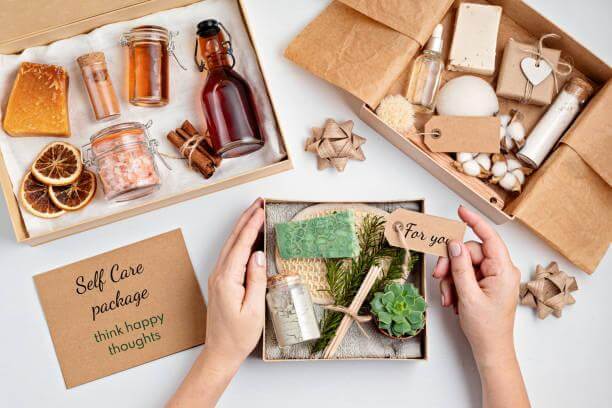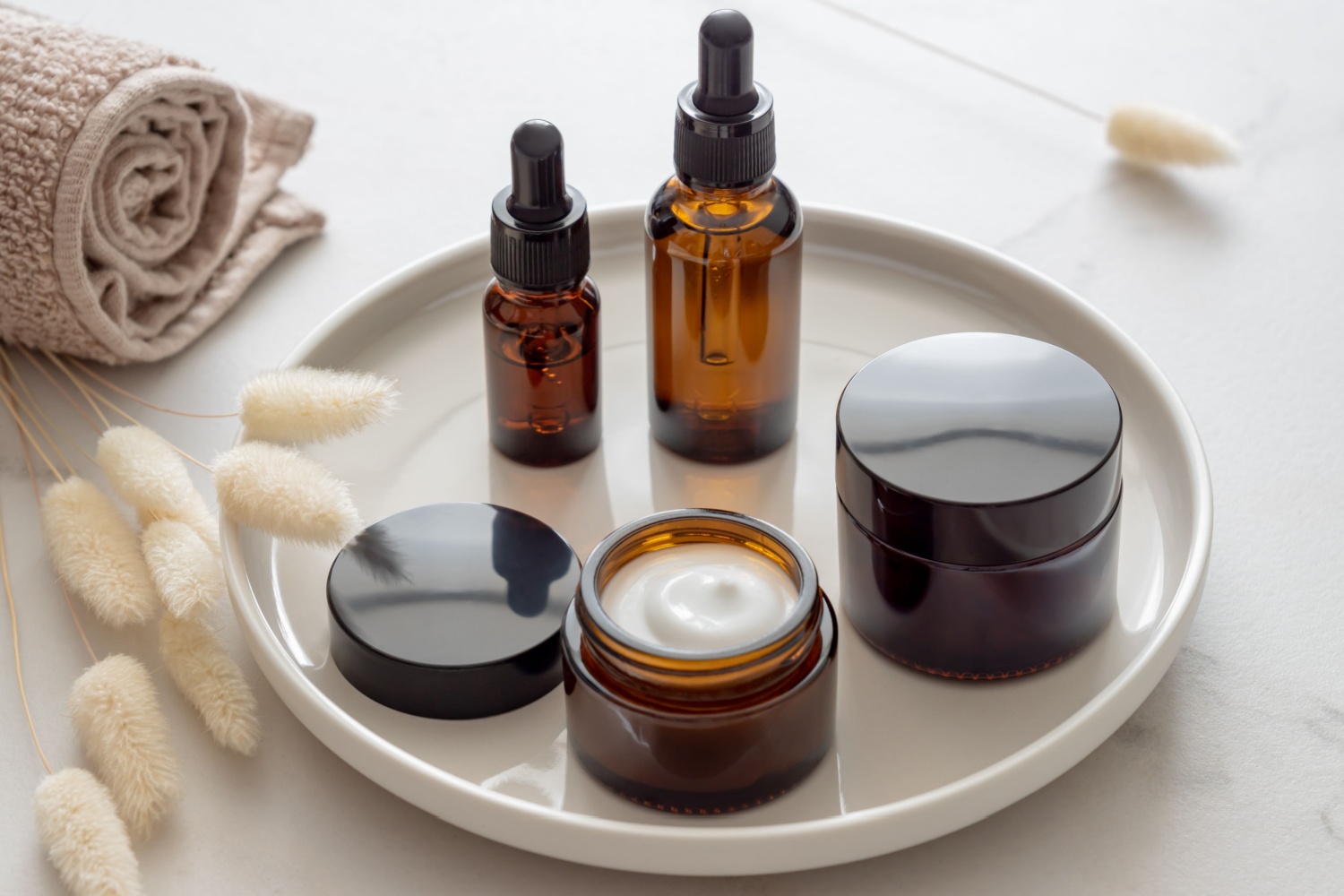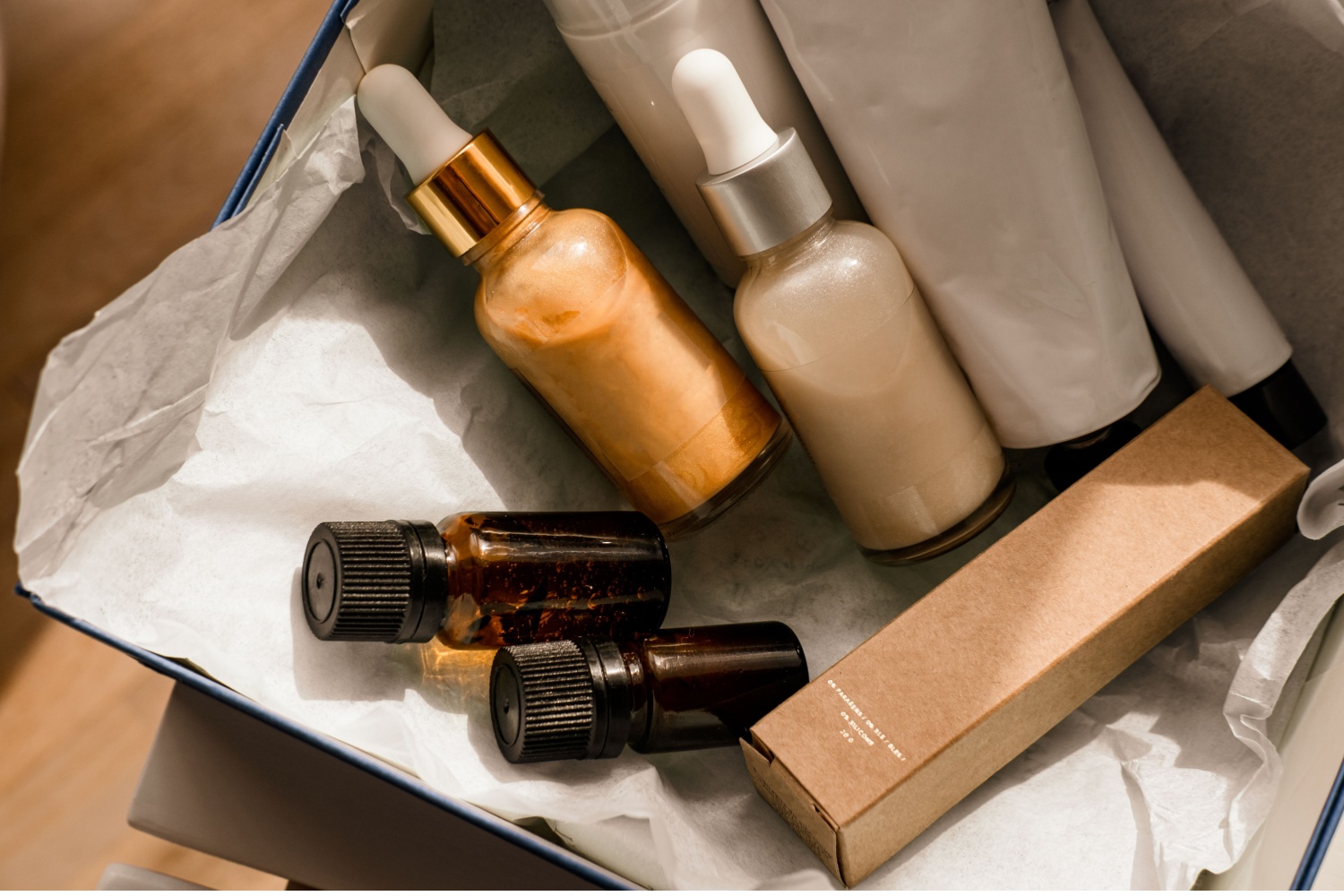Packaging plays an important role in a product lifecycle; it helps to ensure that a product gets to the hands of the end-users in good condition. Two common types of packaging are primary and secondary packaging.
This article offers a full guide to primary packaging and secondary packaging. We will explain the following topics in this article: the definition of primary and secondary packaging; the main difference between primary vs secondary packaging; types of primary and secondary packaging in the cosmetic industry; and factors to consider when choosing packaging materials for cosmetics.
What is Primary Packaging
Due to the great importance of primary packaging, we can simply say that the production cycle is not complete without the primary packaging material. Check below to know the meaning of primary packaging and why it is very important:
The Definition of Primary Packaging
Considering the function of the primary packaging, it is usually referred to as the consumer unit – it is the packaging that comes in direct contact with the product and at the same time the last piece every consumer will open when unwrapping a product.
Primary packaging plays an important role in ensuring that a product is protected from damage and gets into the hands of the consumer safely.
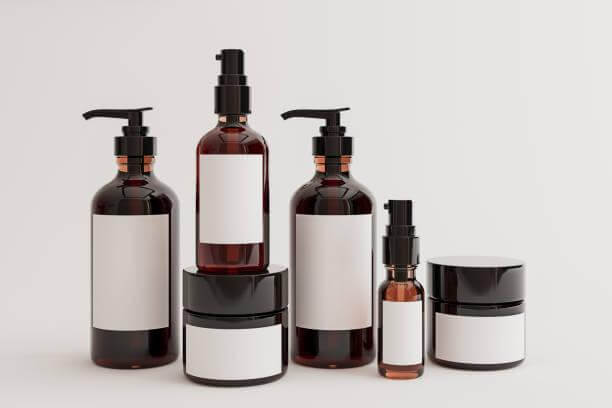
Primary Packaging Examples
Talk of any industry producing a physical product, most of them use primary packaging for their products. Cosmetic companies also use different types of primary packagings—such as bottles, tubes, jars, etc.—to make products look appealing and to enable easy useability for consumers.
What is Secondary Packaging
Secondary packaging is the second level of packaging used for protecting products after applying the primary packaging. Though the secondary packaging does not come in direct contact with the product, it serves some important functions.
The Definition of Secondary Packaging
Secondary packaging is used to organize and keep together the individual units of products. This particular type of packaging – secondary packaging material does not come in contact with the product; it is used after the primary packaging to protect products, organize products, and keep them ready for shelf life.
Another function of secondary packaging material is that it helps to make storage, shipping, and logistics easier and safer. Aside from organizing and keeping products together, secondary packaging materials – especially folded cartons can be used for marketing purposes.
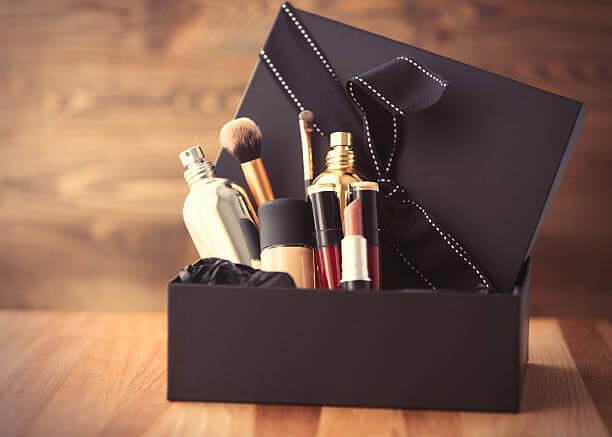
Secondary Packaging Examples
The most common secondary packaging example is the folded cartons. Some of the common components you will find in secondary packaging are boxes, reinforcements, papers, bags, and paddings.
For instance, food and beverage companies often use corrugated boxes to keep individual boxes of cereal. Other industries like pharmaceutical and cosmetics often use secondary packaging material like paperboard boxes to package bottled products.
Main Differences: Primary Packaging vs Secondary Packaging
In this section, we discuss the main differences: primary packaging vs secondary packaging.
Different Purpose
Primary packaging is the packaging that is in direct contact with the product. In other words, it can simply be described as the packaging material that protects and contain the main product.
The primary packaging is usually inside the secondary packaging. In primary packaging, both functionality and aesthetics are of utmost importance.
Secondary packaging is mostly used to keep individual product units together for easy storage, logistics, and transportation.
In addition to providing aesthetic appeal and conveying essential product information, secondary packaging materials also serve as a powerful tool for branding. They enable companies to reinforce their brand identity and create a memorable impression in the minds of consumers.
Different Material
It is certain that the primary packaging will be affected by the reactions from the product. As a result, primary packaging requires materials compatible with the product. The primary packaging material you will select for a particular product must be able to withstand the chemical properties of the product.
Acrylic, known for its durability and versatility, is often chosen for its resistance to many chemicals.
Glass, another commonly used material, offers excellent chemical resistance and impermeability. It is particularly suitable for products that require a high level of protection against environmental factors and potential reactions.
Secondary packaging serves as the outer layer of packaging that provides additional protection to the primary packaging of a product.
Paperboard, known for its strength and flexibility, is a popular choice for secondary packaging.
Bamboo and sugarcane-based packaging are examples of plant-based alternatives that offer both functionality and eco-friendliness.
In summary, you can now see that primary vs secondary packaging is completely different from each other. After reading this section, you should be able to understand the difference between primary and secondary packaging.
Types of Primary Packaging and Secondary Packaging in the Cosmetics Industry
Here, you will learn the different types of primary vs secondary packaging used in the cosmetics industry.
Primary Packaging for Cosmetics
- Cosmetic Bottles
Cosmetic bottles are one of the popular options used as the primary packaging for cosmetics because it helps to enhance product packaging. It will not only protect products from damage and cross-contamination; the product will also be protected from oxygen exposure.
This feature is very important because many cosmetic products contain organic and unsaturated compounds like oils, fats, and pigments that undergo oxidation when exposed to air.
Look no further for the best cosmetic bottles for your cosmetics products. Cosmopacks offers different types of bottles; they include airless, lotion, and roll-on bottles. These cosmetic bottles are designed to offer optimum protection for different cosmetic products.
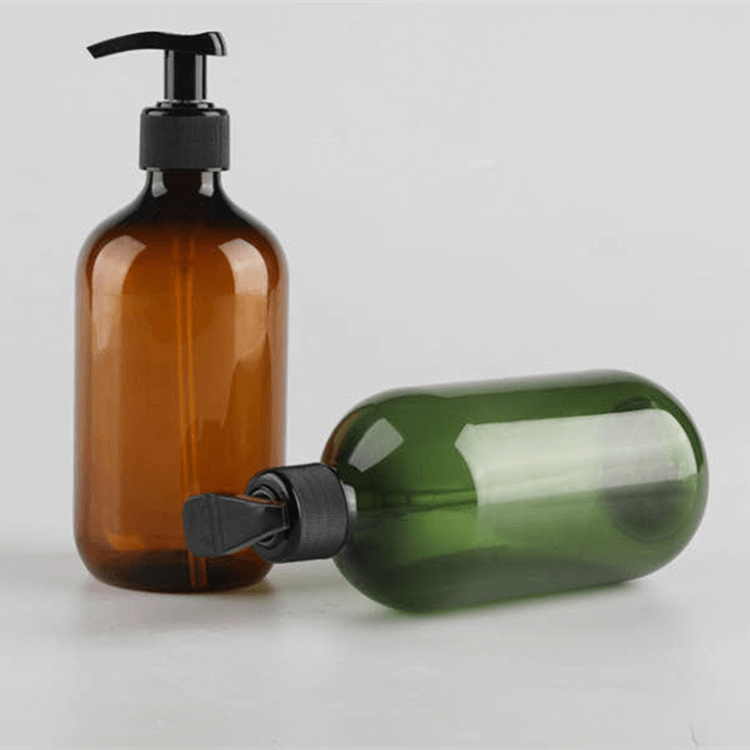
- Cosmetic Jars
The cosmetic jar is a top primary packaging material used in the cosmetic industry. Cosmetic jars are widely used because of their ability to keep different cosmetic products. They contain gels, body lotions, creams, powders, perfumes, and other deep cleansing products.
Cosmetics jars are made from a wide range of materials, including PP, SAN, PET, and acrylic. These materials can protect their content from contamination, heat, and UV rays.
At Cosmopacks, you will find cosmetic jars made with high-quality and non-toxic materials such as PP, PCR, and acrylic. Also, we provide custom cosmetic jars for cosmetic brands. These jars will be designed to meet the exact needs and requirements of the brand.
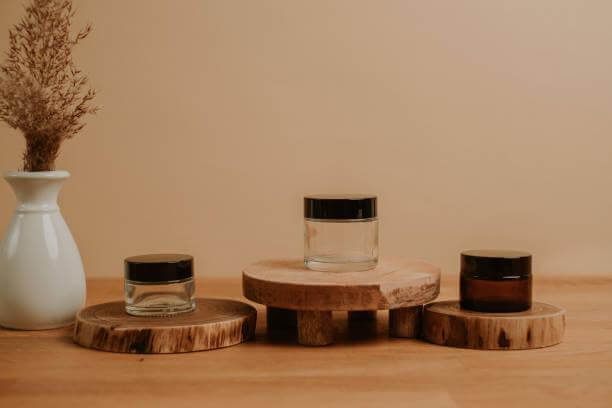
- Cosmetic Tubes
Now, the third primary packaging option in this section – Cosmetic tubes. First, cosmetic tubes are preferred by a lot of people because it has a very low weight compared to bottles. Other benefits of using tubes for cosmetic products include – a higher level of protection, less expensive, versatility, and eco-friendly.
Body lotions, facial washes, cleaning creams, and shampoos can be packaged in cosmetic tubes.
Cosmopacks is a trusted manufacturer and supplier of cosmetic tubes including both regular and irregularly shaped cosmetic tubes. Are you wondering if our cosmetic tubes will be suitable for your different beauty products? Yes, our tubes are ideal for various cosmetic products.
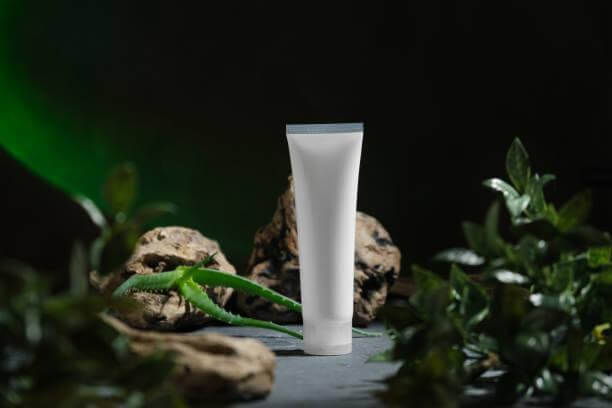
- Pumps and Sprays
Pumps and sprays – which are also known as airless cosmetic pump bottles – are the fourth primary packaging options on this list. This packaging option is suitable for products that easily lose their effectiveness when exposed to air.
For instance, some products lose their effectiveness, and oxidation increases when exposed to air. Since pumps and spray packaging materials are not subjected to repeated openings, the materials will be safe inside them.
Cosmopacks provide affordable airless pump bottles that can be used for different cosmetics, including shaving cream, baby products, hand sanitizer, spot removals, and a lot more. The benefits of our airless cosmetic bottles are air insulation, minimal wastage, and double-layered walls. Read more about Airless pumps: How They Work and Benefits.
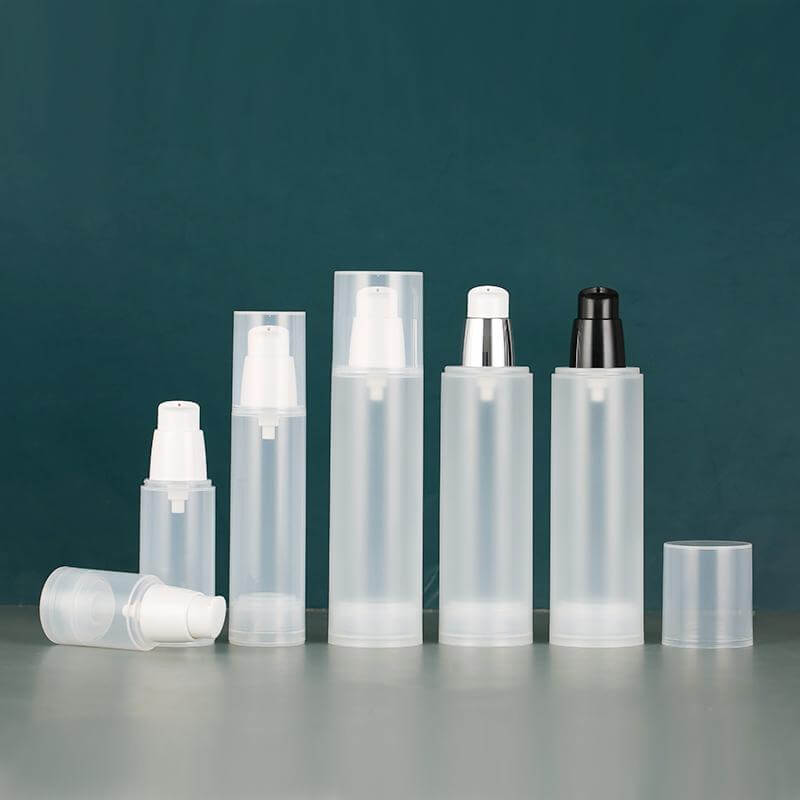
- Closures and Caps
Finally, we come to the last primary packaging material on this list – closures and caps.
Different types of caps serve specific purposes in packaging and play a vital role in preventing oxygen exposure and maintaining the quality of cosmetic products. Here are five common types of caps and their characteristics:
- Twist Open Cap: This cap is designed with ridges or grooves that allow users to twist and open the container. It provides a secure seal when closed, minimizing oxygen exposure. Twist-open caps are commonly used for jars and bottles.
- Flip Top Cap: Featuring a hinged lid, flip top caps are convenient for quick and easy access to the product. They often have a small opening for controlled dispensing, reducing the risk of excessive oxygen exposure. Flip-top caps are commonly found on shampoo bottles, lotions, and other liquid products.
- Push-Pull Cap: These caps have a push-and-pull mechanism, where the user pushes down to open and pulls up to close. They offer a reliable seal and are often used for squeeze tubes or containers where the product needs to be dispensed with precision.
- Disc Top Cap: Disc top caps feature a small, round disc that can be pressed down on one side to open and release the product. When released, the disc springs back to its closed position, minimizing oxygen exposure. These caps are commonly found on bottles containing liquid products like toners or cleansers.
- Threaded Closure: Threaded closures consist of a cap and a corresponding threaded neck on the container. By twisting the cap onto the container, a tight seal is created, effectively minimizing oxygen exposure. Threaded closures are commonly used for jars, bottles, and tubes.
At Cosmopacks, you will get different closures and caps for your cosmetic bottles, cosmetic jars, and cosmetic tubes. Depending on your cosmetic products, we can help you design and manufacture closures and caps that suit your exact needs.
Secondary Packaging for Cosmetics
- Folding Cartons
Folding cartons is one of the most popular secondary packing solutions used by many cosmetic companies. They can be used to package hair care, personal care, fragrance, and beauty products.
If you will be shipping your products to several places, it is advisable to consider folding cartons; their lightweight will greatly reduce shipping costs. Lastly, folding cartons are cost-effective and efficient.
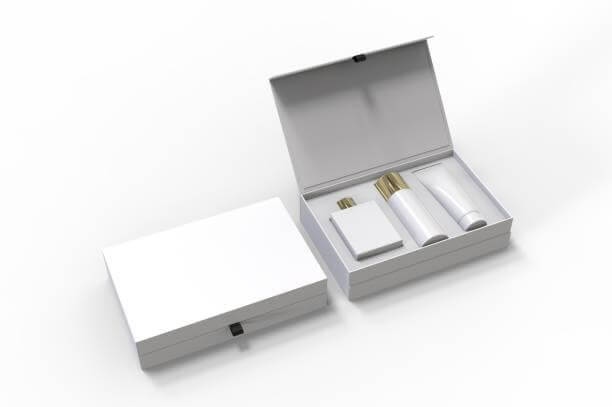
- Rigid Boxes
You probably would have come across rigid boxes before, but not certain if it is different from the paperboard used for folding cartons.
Compared to other types of secondary packaging for cosmetics, rigid packaging is extremely expensive. Rigid packaging is made of the exact material used for constructing standard folding cartons. This type of packaging can be used in merchandising cosmetics.
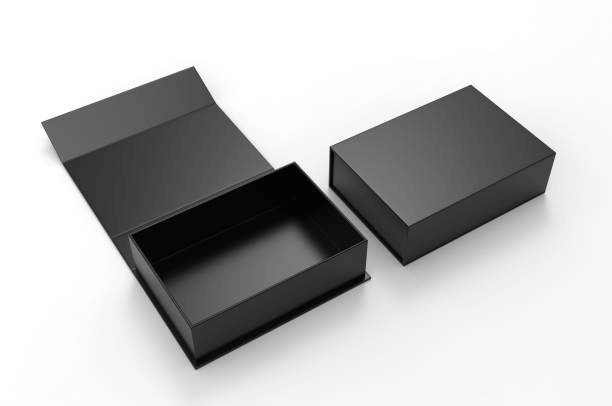
- Trays
Why do many people prefer using trays as secondary packaging for cosmetics? Trays are strong and durable materials; they provide maximum protection for the products. Cosmetics packaged in trays do not get damaged easily when transported from one place to another. Trays are designed to prevent the boxes from deforming, opening, and keeping the products in a secure position.
- Shrink Wrap and Film
Similar to trays, shrink wrap and film is a high-quality secondary packing that is very good for cosmetics – especially bottle cosmetics. While you have your products packaged in shrink wrap and film, you need not worry when shipping them worldwide.
The shrink and wrap film is very durable and will provide extremely high protection for the products. Another beautiful thing about this packaging material is that it is environmental-friendly.
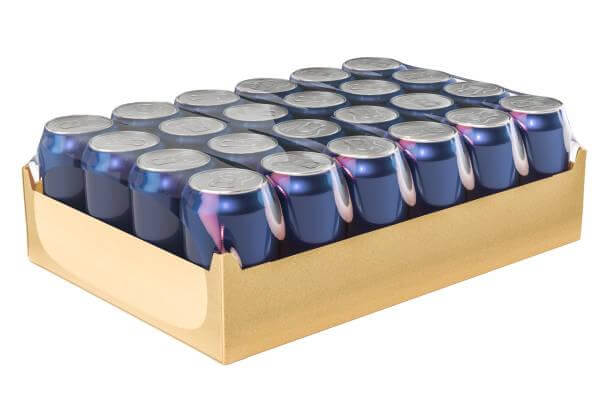
How to Choose Primary and Secondary Packaging Materials for Cosmetics
After discussing the main difference between primary packaging vs secondary packaging, it is very important to choose the appropriate packaging to protect your cosmetics. In this section, we will explain how to choose primary and secondary packaging materials.
Considerations of Primary Packaging for Cosmetics
Primary packaging is the house that contains cosmetic products; therefore, it will have direct contact with the product. Choosing the exact primary packaging material suitable for a cosmetic product will require considering the following factors explained below:
- Product Compatibility
Product compatibility should be considered when choosing primary packaging for your cosmetic products. The product and the primary packaging will interact with each other because of the direct contact. For example, some products containing biological properties may be highly-sensitive to the primary packaging.
In order to ensure that the product remains in its original state for a long period, it is important to do compatibility tests. Product quality can be affected by choosing the wrong packaging material. For example, some cosmetic products are moisture or light-sensitive, so using packaging that is not moisture-resistant or offers light protection can lead to product degradation and deterioration.
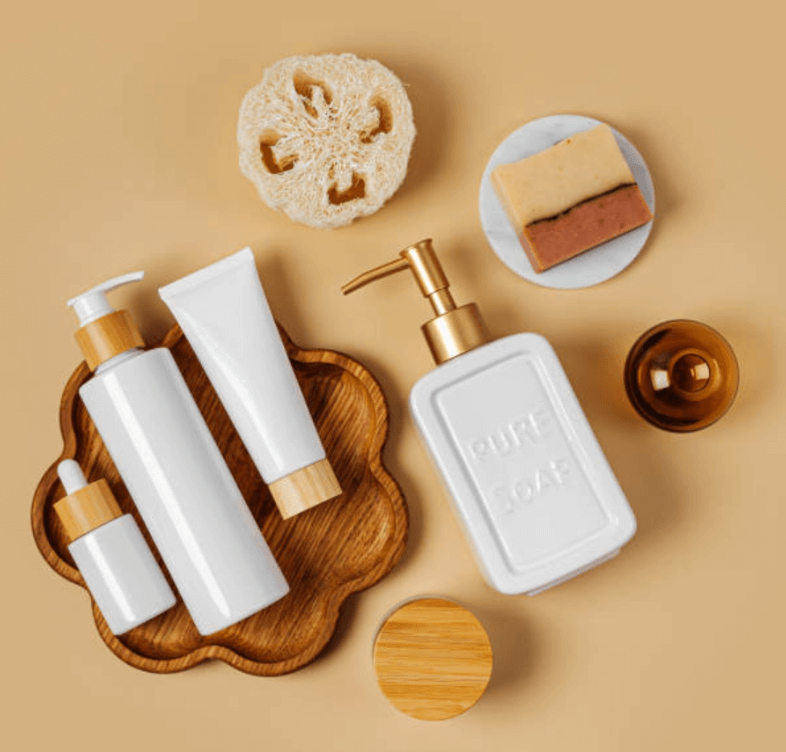
- Functionality
Durability, moisture resistance, light protection, and ease of use – should be considered when thinking about functionality. Consideration of primary packaging factors, such as durability, moisture resistance, light protection, and ease of use, is essential for various reasons.
Durability ensures that the packaging can withstand the challenges of transportation, handling, and storage, safeguarding the product from damage and maintaining its integrity. Moisture resistance is crucial for products sensitive to moisture, preventing degradation, spoilage, or loss of effectiveness.
Adequate light protection shields light-sensitive products from photochemical reactions that can lead to degradation or loss of potency. Finally, ease of use enhances the overall user experience, making it convenient to access, dispense, or apply the product, which positively impacts consumer satisfaction and brand perception.
Packaging features that are considered easy to use include wide openings or flip-top caps for easy access, pump dispensers for effortless product extraction, and clear labeling for clear instructions and information. Ergonomic designs and intuitive closures also enhance user convenience.
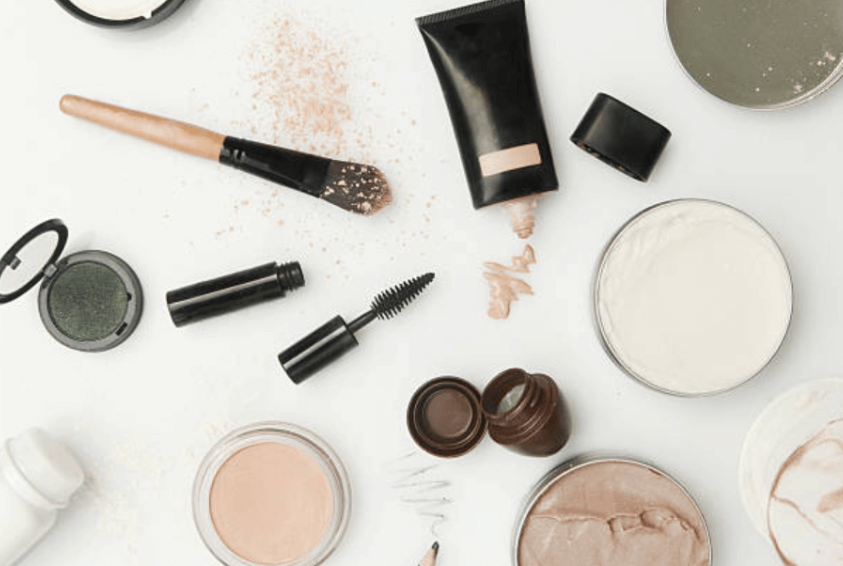
- Safety and Regulatory Compliance
“Is this material safety and regulatory compliant?” That is the next factor to consider before you select a particular packaging material for your product. Packaging materials for cosmetics must adhere to safety regulations to ensure consumer protection.
Chemical elements that are typically restricted or prohibited in packaging materials include lead, mercury, cadmium, and certain phthalates. These elements are considered hazardous and can pose risks to human health. Compliance with all the safety and regulatory requirements of the Food and Drug Administration (FDA) ensures the use of safe packaging materials for cosmetics.
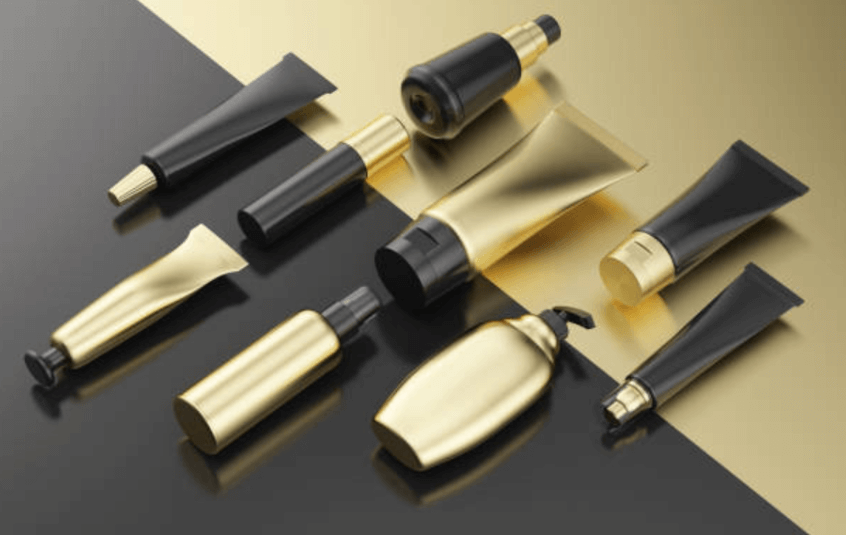
- Brand Image
Brand image is one of the factors that should not be ignored when you want to choose a primary packaging material. Packaging material is not only meant to provide protection, it can also be used for marketing purposes.
Go for packaging materials that are luxury, eco-friendly, and innovative. You can let people know that you care for the environment when you use eco-friendly packaging materials for your cosmetics. Using luxurious packaging materials can create a brand image of sophistication, exclusivity, and high-quality. It can convey a sense of prestige and elegance, enhancing the perceived value and desirability of the product.
- Sustainability
Because people are shifting their interest to eco-friendly products is one main reason to choose an eco-friendly packaging material.
First, with the high demand for eco-friendly materials, people are ready to pay more for them. Secondly, it is a cool way to improve your company’s reputation and stand out from the competition. Learn more about how you can empower your brand with eco-friendly cosmetics packaging ideas.
Considerations of Secondary Packaging for Cosmetics
Secondary packaging materials will provide further protection for cosmetic products and enable easy storage and transportation. To choose a suitable secondary packaging material for a cosmetic product, it is necessary to consider the following factors below:
- Branding and Communication
Secondary packaging offers stability to the products which enables easy storage and transportation. Another main benefit of this type of packaging is that it can be used for brand marketing and communication; it shows your brand identity and conveys key messages. For branding purposes, you can include colors, graphics, and imagery that are enticing.
While for communication purposes, you can include the key features of your product on the packaging materials. This way, you communicate your product’s key benefits to users. Finally, you need to know that the secondary packing you will choose for cosmetics must be able to support your branding and communication purposes.
- Visual Appeal and Aesthetics
If you want to create a good impression of your products in the heart of your customers, then you have to consider visual appeal and aesthetics when choosing secondary packaging. Factors such as color, texture, finish, and structural design should be greatly considered.
Metallic finishes, such as gold, silver, or bronze, can add a touch of luxury and glamour to packaging. The reflective nature of these finishes creates a sense of opulence and exclusivity. Metallic accents or foiling on packaging can catch the light and draw attention, enhancing the overall visual appeal of the product.
- Environmental Impact
People are now concerned about improving their environment more than ever before. No matter the level of packaging you want to choose for your cosmetic products, ensure that you consider this factor seriously. Prioritize materials that align with eco-friendly practices. This way, consumers you will help to show your commitment to sustainability.
Also, customers will see that you do not only care about making sales, but you care about the environment. Choosing packaging materials that reduce carbon footprint and production waste is the only way to make this known.
Choose Cosmopacks for Reliable Primary Packaging for Cosmetics
In the different sections contained in this article, we already discussed extensively – primary packaging vs secondary packaging. If you have gone through this article and you want to make more inquiries about primary packaging, you should consider choosing Cosmopacks.
Full Set of Cosmetics Containers
Talk of diverse cosmetic packaging, you will get everything at Cosmopacks. At our company, you can all your set of high-quality and eco-friendly cosmetic bottles, cosmetic tubes, cosmetic jars, recycled bottles, and makeup packaging.
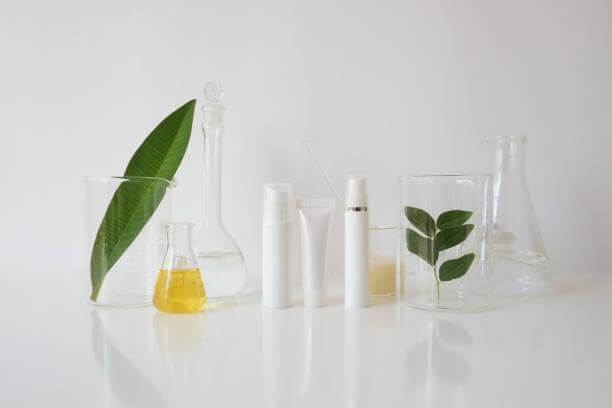
Extensive OEM Options
Working closely and doing business with Cosmopacks, you are set to enjoy our extensive original equipment manufacturer (OEM) options. We do not just provide solutions, but we ensure that our OEM solutions come with a touch of excellence and distinction.
We provide all the assistance needed to ensure that you get a product that meets your brand needs and requirements.
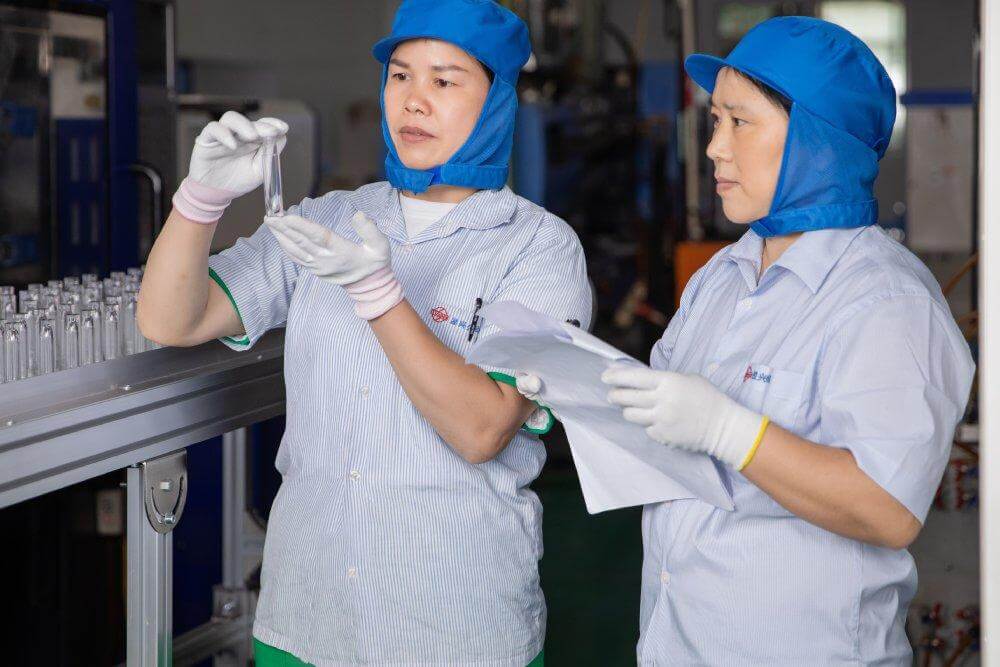
Flexible MOQ
Another benefit you stand to get when you buy from us at Cosmopacks is favorable MOQ. We do not have a strict minimum order quantity (MOQ) like other cosmetic packaging manufacturers. We understand that some situations may affect business demands; our MOQ is open for negotiation, most especially for startup cosmetic businesses.
Conclusion
After reading this article, you should now fully understand the meaning of both primary and secondary packaging; their main differences; and several types of primary and secondary packaging. So, if you need primary packaging for your cosmetics business, Cosmopacks is always ready to help.
Cosmopacks – a reliable and trustworthy cosmetic packaging manufacturer and supplier with about 8 years of experience. Providing solutions with a touch of excellence and distinction, we are eager to provide you with primary cosmetic packaging – such as cosmetic jars, bottles, tubes, makeup packaging, pumps, and sprays that suit your business needs.
Contact us today to get a quote.

